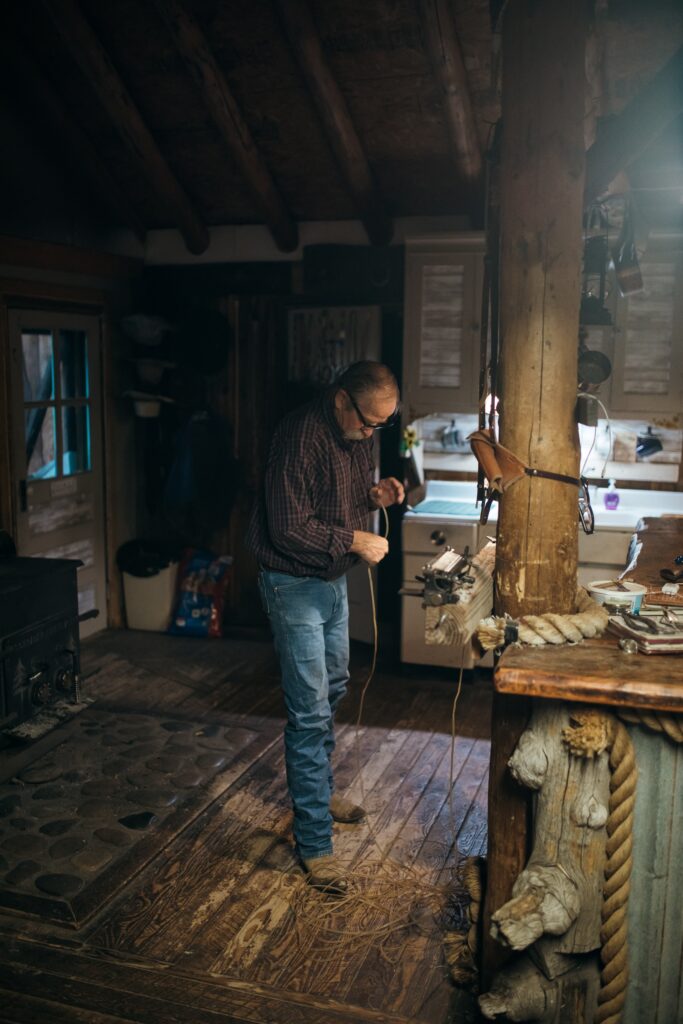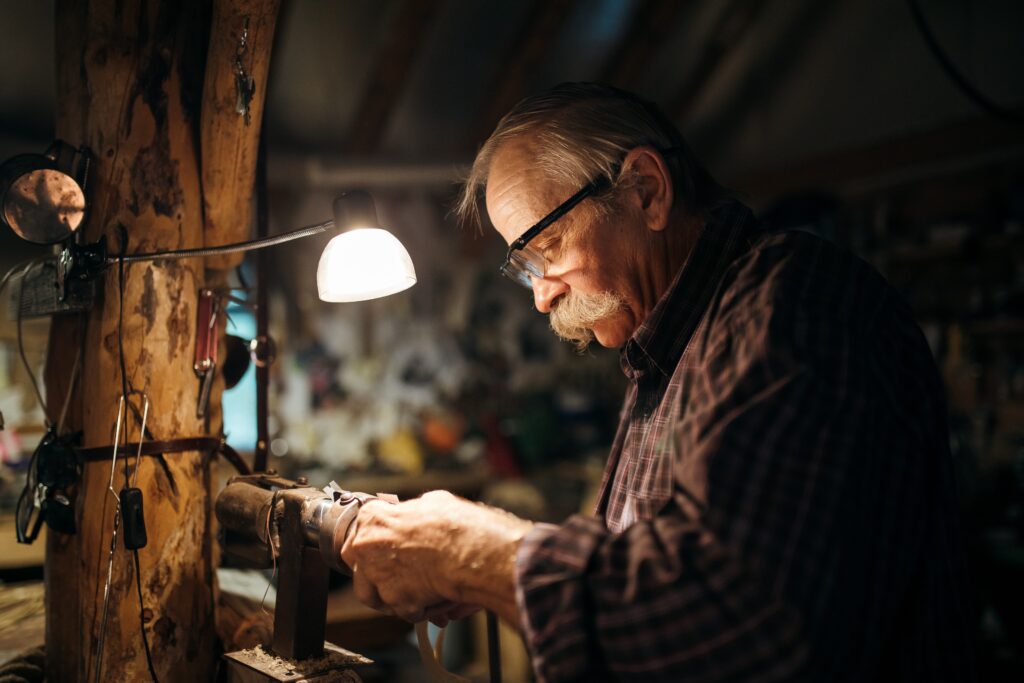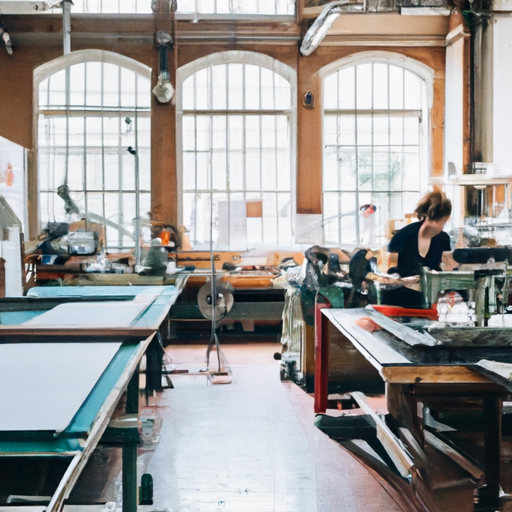Are you a passionate DIY enthusiast looking to optimize your workshop space? Look no further! “Best Workshop Setup Ideas For DIY Enthusiasts” is here to provide you with a comprehensive guide on how to transform your workshop into a functional and well-organized space. Whether you’re a seasoned pro or just starting out with your DIY projects, this article will offer practical tips and ideas to help you create the perfect workshop setup that maximizes efficiency and enhances your creativity. Say goodbye to clutter and hello to a workshop that inspires!
1. Lighting
When it comes to setting up your workshop, lighting is a crucial element to consider. Good lighting not only enhances visibility but also creates an inviting and comfortable space to work in. There are several types of lighting options you can incorporate into your workshop.
1.1 Natural lighting
Natural lighting is not only cost-effective but also beneficial for your overall well-being. Position your workbench near a window to take advantage of natural light. This will not only provide you with ample illumination but also allow you to enjoy the view outside while working on your projects.
1.2 Task lighting
Task lighting is essential for focusing light on specific areas where you require extra visibility. This type of lighting typically comes in the form of adjustable desk lamps or overhead lights with a focused beam. Place task lighting above your workbench or near your main work area to ensure that you have adequate lighting while performing intricate tasks.
1.3 Ambient lighting
Ambient lighting helps create a warm and inviting atmosphere in your workshop. This can be achieved by installing overhead lights or using multiple light sources strategically placed throughout the space. Ambient lighting ensures that the entire workshop is evenly lit, reducing the strain on your eyes and making it easier to work for extended periods.
1.4 Adjustable lighting
Adjustable lighting allows you to adapt the brightness of your workshop to suit different tasks or preferences. Consider installing dimmer switches or using smart bulbs that can be controlled using your smartphone or a remote control. This will give you the flexibility to customize the lighting according to your specific needs and create a comfortable working environment.
2. Workbench
A sturdy and well-equipped workbench is the heart of any workshop. It serves as a functional workspace where you can carry out your DIY projects with ease. Here are some important features to consider when setting up your workbench.
2.1 Sturdy and spacious work surface
Invest in a workbench that has a solid and durable work surface. Consider the type of projects you are likely to undertake and choose a workbench made of a material that can withstand heavy use. Ensure that the work surface is spacious enough to accommodate your tools, materials, and projects comfortably.
2.2 Organized storage
Having organized storage is essential for maintaining a clean and efficient workspace. Choose a workbench that has built-in storage options such as drawers, shelves, or cabinets. This will help you keep your tools and supplies within reach and prevent clutter from accumulating on your work surface.
2.3 Integrated power outlets
Having easy access to power outlets near your workbench is crucial for operating power tools and charging your electronic devices. Look for a workbench that has integrated power outlets or consider installing a power strip along the edge of your workbench. This will ensure that you have a convenient power source whenever you need it.
2.4 Clamping options
Clamping is an essential technique used in woodworking and other DIY projects. Make sure your workbench has various clamping options such as bench dogs, vices, or clamping tracks. These features will allow you to securely hold your workpieces in place, providing stability and accuracy during your projects.

3. Tool Storage
Properly organizing and storing your tools is essential for a well-functioning workshop. It not only helps you find tools easily but also prolongs their lifespan by preventing damage. Consider these storage options for your tool collection.
3.1 Wall-mounted pegboard
A wall-mounted pegboard is a versatile and efficient way to store and display your tools. By hanging your tools on hooks and pegs, you can easily see and access them whenever needed. Arrange your tools by category or size to maintain a tidy and organized workspace.
3.2 Tool chest or cabinet
For larger tools or those you don’t use as frequently, consider investing in a tool chest or cabinet. These storage solutions often have multiple drawers or compartments, allowing you to organize your tools based on their size or function. Label each drawer for easy identification and find a cabinet that fits well within your workshop layout.
3.3 Wall shelves or racks
Wall shelves or racks are practical options for storing tools and materials of various sizes and shapes. Consider installing sturdy shelves above your workbench or along the perimeter of your workshop. This will keep your tools within arm’s reach while maximizing floor space.
3.4 Magnetic tool holders
Magnetic tool holders offer a unique and space-efficient way to store your tools. Attach magnetic strips to the walls or the sides of your workbench to hold metal tools such as wrenches, screwdrivers, and pliers. This not only saves space but also makes it easy to grab the tools you need quickly.
4. Dust Collection
Dust collection is a crucial aspect of any workshop setup, as it helps maintain a clean and healthy working environment. Wood dust, metal shavings, and other debris can pose health risks and create a messy workspace. Consider these options for effective dust collection.
4.1 Centralized dust collection system
If your workshop is dedicated to woodworking or other activities that generate a significant amount of dust, a centralized dust collection system is highly recommended. This system typically consists of a powerful dust collector connected to various machines via a network of hoses. It ensures that dust and debris are effectively captured and contained, keeping your workshop clean and reducing airborne particles.
4.2 Portable dust extractors
For smaller workshops or projects that require mobility, portable dust extractors are a practical option. These compact units can be moved around your workshop as needed and connected to individual machines to capture dust directly at the source. Look for models with efficient filtration systems to ensure that fine particles are effectively collected.
4.3 Air filtration system
In addition to capturing dust at its source, an air filtration system helps remove airborne particles, improving the overall air quality in your workshop. These systems typically consist of a series of filters that trap fine particles as the air circulates. Consider installing an air filtration system to minimize dust-related health concerns and create a cleaner workshop environment.
4.4 Dedicated vacuum system
A dedicated vacuum system is a convenient way to quickly clean up dust and debris from your workbench and floor. Choose a vacuum with strong suction power and attachment options suitable for your particular cleaning needs. Regularly vacuuming your workshop will help maintain cleanliness and prevent dust from accumulating on your tools and surfaces.

5. Organization and Labeling
Maintaining a well-organized workshop is essential for efficiency and productivity. Having a designated place for every tool and material not only saves time but also ensures a clutter-free workspace. Consider the following organization and labeling techniques.
5.1 Clear storage containers
Invest in a variety of clear storage containers to keep your smaller tools, hardware, and materials organized. Opt for containers with removable dividers or compartments to customize storage configurations based on your needs. Label each container to easily locate items and create a systematic organization system.
5.2 Tool labeling and shadowboards
Labeling your tools is an effective way to keep track of them and maintain order in your workshop. Use adhesive labels or a label maker to mark the handles or cases of your tools with their names or categories. Another useful technique is utilizing shadowboards, where tool outlines are traced or painted onto a board. This visually guides you in placing tools back in their designated spots, ensuring they are always easy to find.
5.3 Drawer dividers and organizers
For workshops with tool cabinets or chests, utilize drawer dividers and organizers to create separate compartments for different types of tools. This prevents items from getting mixed up and makes it easier to locate specific tools quickly. Consider adjustable dividers or foam inserts that can be customized to fit your tools perfectly.
5.4 Wall-mounted storage bins
Wall-mounted storage bins are an excellent solution for storing frequently used tools and accessories. Install shelves or racks on your workshop walls and use labeled storage bins to keep your commonly used tools easily accessible. This not only saves valuable workspace but also promotes a clean and organized environment.
6. Power Tools
Power tools are essential for many DIY projects, as they help streamline tasks and improve efficiency. Whether you are a woodworking enthusiast or enjoy tackling home improvement projects, having the right power tools is crucial. Consider the following types of power tools for your workshop.
6.1 Essential power tools
The essential power tools for most DIY enthusiasts include a drill/driver, circular saw, jigsaw, and random orbital sander. These versatile tools cover a wide range of tasks, from drilling holes and driving screws to cutting various materials and sanding surfaces. Investing in high-quality, reliable power tools ensures better performance and durability.
6.2 Cordless tools
Cordless power tools offer the advantage of portability and flexibility. They eliminate the need for an electrical outlet and allow you to work in different areas of your workshop or even outdoors. Consider investing in a cordless drill/driver, circular saw, and other tools that fit your specific project requirements. Make sure to have spare batteries and a charger to ensure uninterrupted operation.
6.3 Benchtop power tools
Benchtop power tools are larger, stationary tools that are typically mounted on a workbench or dedicated stand. They provide more power and stability for heavy-duty tasks and are particularly useful for woodworking projects. Common benchtop power tools include table saws, band saws, jointers, and planers. Ensure you have adequate space and proper safety measures in place when using these tools.
6.4 Multi-functional tools
Multi-functional tools, often referred to as multi-tools, combine several functions into one compact device. These versatile tools usually include a variety of interchangeable attachments or blades, allowing you to perform different tasks with a single tool. Some popular examples are oscillating multi-tools and rotary tools. Multi-functional tools are particularly handy for detail work, repairs, or smaller DIY projects.

7. Hand Tools
While power tools are essential, hand tools play a vital role in any workshop setup. They offer precision and control, allowing you to work in tight spaces or tackle delicate tasks. Consider the following types of hand tools for your workshop.
7.1 Basic hand tool set
A basic hand tool set should include items such as a hammer, screwdrivers, pliers, wrenches, and a tape measure. These tools are fundamental and versatile, allowing you to handle a wide range of tasks. Invest in high-quality hand tools made from durable materials to ensure longevity and better performance.
7.2 Specialty hand tools
Specialty hand tools are designed for specific tasks and provide better accuracy and control. Some common specialty hand tools include chisels, hand planes, coping saws, and files. These tools are often used in woodworking or other crafts that require precision and attention to detail.
7.3 Precision hand tools
Precision hand tools are essential for intricate tasks that require fine adjustments or delicate handling. These tools include items such as tweezers, precision screwdrivers, and small clamps. Having a set of precision hand tools allows you to work on small electronic devices, jewelry, or intricate woodworking projects with ease.
7.4 Ergonomic hand tools
Ergonomic hand tools are designed with comfort and safety in mind. They feature specially shaped handles or grips that reduce strain and fatigue during extended use. Look for ergonomic versions of commonly used hand tools such as pliers, screwdrivers, and hammers to take care of your hands and wrists while working.
8. Safety Measures
Safety should be a top priority in any workshop setup. Working with tools and machinery poses potential risks, but with proper safety measures in place, you can minimize accidents and injuries. Consider the following safety measures for your workshop.
8.1 Adequate ventilation
Proper ventilation is crucial for maintaining air quality and preventing the accumulation of harmful fumes or dust particles. Ensure that your workshop has adequate ventilation, either through natural airflow or by using exhaust fans or air circulation systems. This will help protect your respiratory health while working with solvents, paints, or other potentially hazardous materials.
8.2 Fire safety equipment
Having fire safety equipment readily available is essential in any workshop. Install fire extinguishers in easily accessible locations and ensure they are regularly inspected and maintained. Additionally, keep a fire blanket or sand bucket nearby to quickly smother small fires. Familiarize yourself with proper fire safety procedures and locate emergency exits in your workshop.
8.3 Safety goggles and gloves
Protecting your eyes and hands is crucial when working with tools and materials. Invest in a pair of safety goggles that provide impact resistance and shield your eyes from flying debris. Additionally, wear appropriate gloves that offer adequate grip and protection against cuts or abrasions. Choose gloves made from materials suitable for the types of tasks you regularly undertake.
8.4 First aid kit
Accidents can happen even in the most well-equipped workshops. Having a fully stocked first aid kit on hand is essential for treating minor injuries and addressing medical emergencies promptly. Ensure the first aid kit includes bandages, antiseptic solutions, adhesive tape, tweezers, and other basic medical supplies. Familiarize yourself with basic first aid procedures to ensure proper care is given when needed.

9. Workshop Layout
An efficient workshop layout plays a significant role in maximizing productivity and ensuring a smooth workflow. Consider the following aspects when designing your workshop layout.
9.1 Efficient workflow design
Plan your workshop layout in a way that maximizes efficiency and minimizes unnecessary movement. Arrange your workbench, tools, and machinery in a logical order, keeping frequently used items within easy reach. Designate specific areas for different stages of your projects, such as a cutting area, assembly area, or finishing area.
9.2 Zone planning
Create different zones within your workshop based on the types of tasks you often perform. For example, have a dedicated woodworking zone, metalworking zone, or painting area. This allows you to organize tools and materials according to their specific use and helps maintain a cleaner and more organized workspace.
9.3 Clear pathways and exits
Ensure that your workshop layout provides clear pathways and easy access to exits. This enhances safety and allows for quick evacuation in case of an emergency. Keep walkways free from clutter and ensure that extension cords or hoses are correctly secured to prevent tripping hazards.
9.4 Dedicated workstations
Consider setting up dedicated workstations for specific tasks or tools. This allows you to create a more specialized and efficient workspace. For example, designate a soldering station or electronics workbench with all the necessary tools and equipment. Having dedicated workstations helps streamline your workflow and improves overall productivity.
10. Inspirational Workspace
Creating an inspirational workspace is essential for maintaining motivation and enjoying your time in the workshop. Consider the following factors to personalize your space and make it a pleasant environment to work in.
10.1 Personalization and aesthetics
Add personal touches to your workshop setup that reflect your interests and personality. Hang up artwork or decorations that inspire you and make the space uniquely yours. Experiment with colors or paint schemes that create a positive and inviting atmosphere and consider incorporating elements such as plants or natural materials to add warmth and a sense of tranquility.
10.2 Motivational posters or artwork
Hang up motivational posters or displays that keep you inspired and focused on your goals. Choose quotes or images that resonate with your passion for DIY projects or reflect the values you want to embody in your work. Surrounding yourself with positive messages can help boost creativity and keep you motivated during challenging times.
10.3 Comfortable seating
Invest in comfortable seating options for those moments when you need to take a break or do some planning and designing. Choose a chair or stool that provides adequate support and promotes good posture. Additionally, consider placing a comfortable reading or relaxation nook in your workshop as a space to unwind and recharge.
10.4 Music or audio setup
Enhance the atmosphere in your workshop by incorporating a music or audio setup. Set up speakers or a radio system that allows you to listen to your favorite tunes or podcasts while working. Music can improve focus and productivity and create a pleasant ambiance in your workspace.
In conclusion, creating a well-organized and efficient workshop setup is essential for DIY enthusiasts. By considering the various aspects discussed in this article, such as lighting, workbench setup, tool storage, dust collection, organization, power tools, hand tools, safety measures, workshop layout, and personalization, you can create a functional and inspirational workspace that enhances your creativity and allows you to excel in your DIY projects. Taking the time to carefully plan and implement these ideas will result in a workshop that meets your specific needs and provides a comfortable and enjoyable environment for your DIY endeavors.


